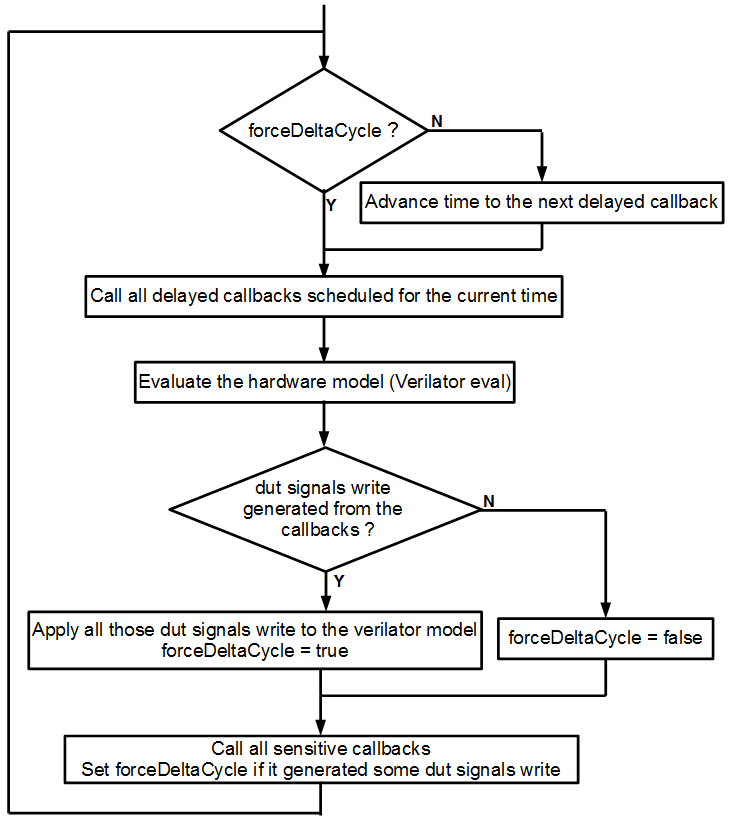Simulation engine
This page explain the internals of the simulation engine.
Basicaly, the simulation engine emulate a event-driven simulator (VHDL/Verilog like) by applying the following simulation loop on the top of the Verilator C++ simulation model :

At a low level, the simulation engine manage the following primitives :
Sensitive callbacks, which allow to call a function on each simulation delta cycle
Delayed callbacks, which allow to call a function in a future simulation time
Simulation threads, which allow to describe concurrent with many times utilities
Command buffer, which allow to delay the write access to the dut to the end of the current delta cycle
- There is some practical uses of those primitives :
Sensitive callbacks can be used to wakeup a simulation thread when a given condition happen, like a rising edge on a clock
Delayed callbacks can be used to schedule stimulus as desaserting a reset after a given time or toggle the clock
Both sensitive and delayed callbacks can be used to resume a simulation thread
A simulation thread can be used (for instance) to produce stimulus and check the dut output values
The command buffer purpose is mainly avoid all concurrency issues between the DUT and the testbench